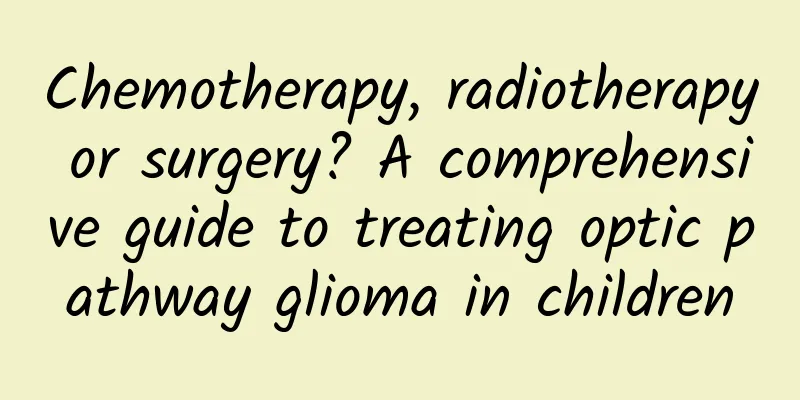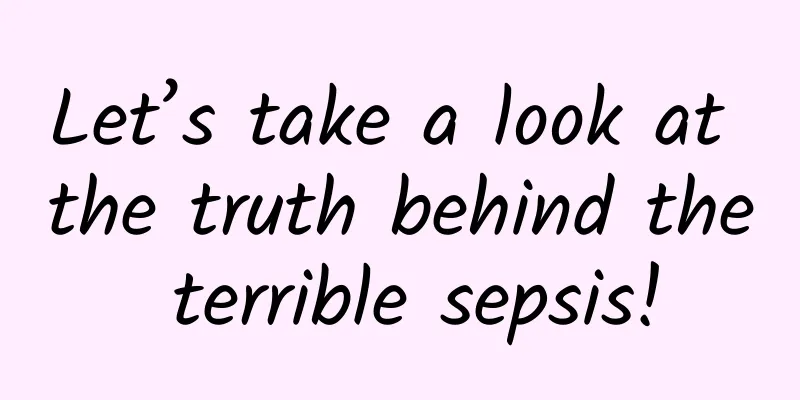Chemotherapy, radiotherapy or surgery? A comprehensive guide to treating optic pathway glioma in children

|
Author: Tian Yongji, Chief Physician, Beijing Tiantan Hospital, Capital Medical University Reviewer: Li Jingjing, Chief Physician, Beijing Tiantan Hospital, Capital Medical University On the road of children's healthy growth, we always hope to build a solid defense for them to protect them from diseases. However, there is a disease called childhood optic glioma, which often threatens children's vision and health silently. Today, we will take you to a deeper level to learn about this tumor, explore its treatments, surgical strategies, and potential risks, and help you better understand and cope with this challenge. 1. Treatment of optic pathway glioma in children As a low-grade malignant tumor, the treatment of optic pathway glioma in children needs to be formulated according to the progression of the disease and the specific conditions of the child. First of all, for children with stable lesions and no obvious changes, follow-up observation may be an appropriate choice. However, when the disease progresses, more aggressive treatment methods need to be considered. Surgery is an important method for treating optic pathway gliomas in children, but the purpose of surgery is not to completely remove the tumor, because optic nerve gliomas originate from the optic nerve, and complete resection will result in irreversible vision. Surgery aims to partially remove the lesions, relieve compression on peripheral nerves and important anatomical structures (such as the hypothalamus and interventricular foramen), and thus improve the condition of hydrocephalus. In addition, surgery can also obtain pathological specimens to provide guidance for subsequent treatment, and may help determine prognosis and find targeted drugs through methods such as genetic testing. Figure 1 Original copyright image, no permission to reprint Radiotherapy is another treatment option, especially for cases where the disease is progressing rapidly or chemotherapy is not effective. Radiotherapy is effective, but it has long-term side effects and may affect the child's endocrine function. Therefore, the use of radiotherapy is relatively cautious both at home and abroad, and it is generally recommended for older children. In recent years, chemotherapy has received increasing attention in the treatment of optic pathway gliomas in children. Chemotherapy has a good effect on most children and can effectively control the disease. However, not all children are sensitive to chemotherapy, and some children may eventually need to switch to radiotherapy. 2. Two major surgical treatment strategies for optic pathway gliomas in children Surgical treatment of optic pathway gliomas in children is generally divided into two categories: stereotactic biopsy and craniotomy. The former is suitable for situations where the tumor is small or the patient's physical condition is not suitable for major surgery. With the help of modern navigation technology, accurate positioning only requires a thick needle to be inserted into the tumor and samples to be taken for pathological examination, providing a basis for subsequent radiotherapy or chemotherapy. Figure 2 Original copyright image, no permission to reprint For children with large tumors, significant compression symptoms or severe hydrocephalus, a craniotomy is required to remove part of the tumor, relieve the space-occupying effect, improve cerebrospinal fluid circulation, and obtain pathological samples. All surgeries must be performed under general anesthesia. Although the stereotactic biopsy operation time is short, the actual stay in the operating room will be longer than expected because children need longer time for anesthesia preparation and awakening. The duration of craniotomy depends on the size of the tumor and blood supply. The operation time may range from three hours to five or six hours, which requires case evaluation. During the operation, the principle of "partial resection within the tumor" is followed, that is, only the inside of the tumor is removed instead of the entire tumor, in order to protect the optic nerve from damage. Advanced imaging techniques, such as magnetic resonance imaging of the visual pathway, are used before the operation to reconstruct the image of the visual pathway, clarify the relationship between the tumor and the optic nerve, achieve precise positioning, and remove the tumor in a targeted manner to avoid excessive damage. Clinical studies have shown that for larger optic pathway gliomas, the amount of intratumoral resection should be controlled at 40%-70% to balance the treatment effect and reduce postoperative complications. It is worth noting that even with partial resection, the tumor may still recur, so postoperative chemotherapy or radiotherapy is indispensable to control the tumor, especially in cases where the tumor has spread to the entire brain or spinal cord, to maintain optic nerve function and ensure the long-term quality of life of the child. Risks of Treatment for Childhood Optic Pathway Glioma The risks of treatment for optic pathway gliomas in children primarily involve visual effects and surgery-related complications. Since optic pathway gliomas are located in any part of the visual pathway, including the optic nerve, optic chiasm, etc., when tumors occur in these parts, vision is often significantly affected and may even cause blindness. After treatment, although the vision of some children may improve or remain stable, the vision of some children may continue to deteriorate or even become blind due to larger lesions or other reasons. Surgery is one of the important means of treating optic pathway gliomas in children, but the risks of surgery cannot be ignored, especially for tumors in the intracranial segment of the optic nerve and optic chiasm. This area is deep and densely populated with blood vessels and nerves, including the internal carotid artery, pituitary gland, and hypothalamus, and the risks of surgery increase accordingly. In addition to the risks of routine anesthesia and craniotomy, specific risks involve perioperative hypothalamic damage, which can cause water and salt metabolism disorders, manifested as polydipsia, polyuria, and fluctuations in blood sodium concentration, which may be as low as 110mmol/L or as high as 170mmol/L. In severe cases, it can cause epilepsy, coma, and even be life-threatening. Endocrine dysfunction is also common, which manifests as hypocortisolemia and hypothyroidism in the short term, affecting the metabolic state. In the long term, it may interfere with the secretion of growth hormone and sex hormones, affecting height and sexual development. |
>>: A must-read for parents: Is intracranial arachnoid cyst really an “invisible bomb”?
Recommend
Should I break it or not? What should I do? - Sustained/controlled release and enteric-coated tablets
I often hear some patients complain that the tabl...
Why do women suffer from spleen and kidney deficiency?
Nowadays, many people think that only men will su...
Five months pregnant, lower abdomen pain
When a woman is about five months pregnant, she o...
How long does it take for the belly to return to a flat state after a normal birth?
During pregnancy, mothers often feel various disc...
Can anger cause breast pain?
Maybe many female friends have experienced breast...
What to do if a pregnant woman has a swollen mouth
When you are about 6 months pregnant, you should ...
How to treat uterine fibroids
The uterus is clear to all women, but in fact onl...
Can I have medical abortion if my gestational sac is 13 and has no yolk?
If you are not careful during sexual intercourse,...
How to treat gynecological inflammatory reactive changes
Gynecological inflammation is the most common sym...
Is IVF harmful to women?
For those infertile couples, the emergence of IVF...
Is gynecological mycoplasma positive serious?
Mycoplasma is a kind of prokaryotic organism, whi...
Teach you how to distinguish between depression and mental illness!
Because patients with depression sometimes behave...
Lumbar disc herniation is not a contraindication to running
"Director Guo, I have lumbar disc herniation...
What medicine should I take to treat black vaginal discharge?
Every adult woman will have menstruation, and wil...
Addicted to cats? The reason why cats are so popular is →
It is said that "it is fun to pet cats, and ...

![[Medical Q&A] What should pregnant mothers do if they can’t sleep?](/upload/images/67effb40c644b.webp)







